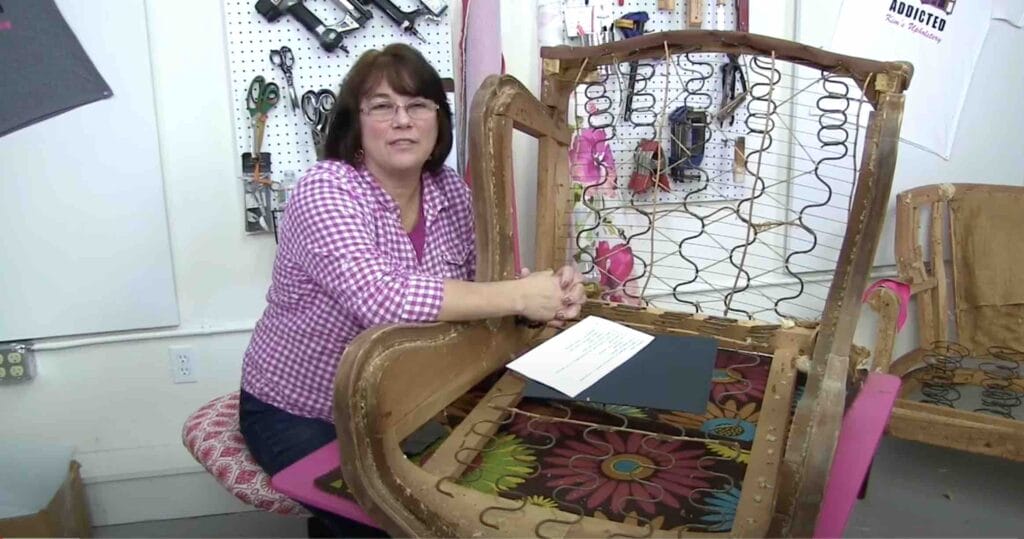How to Choose the Right Fabric for Your Upholstery Project (11 Factors)
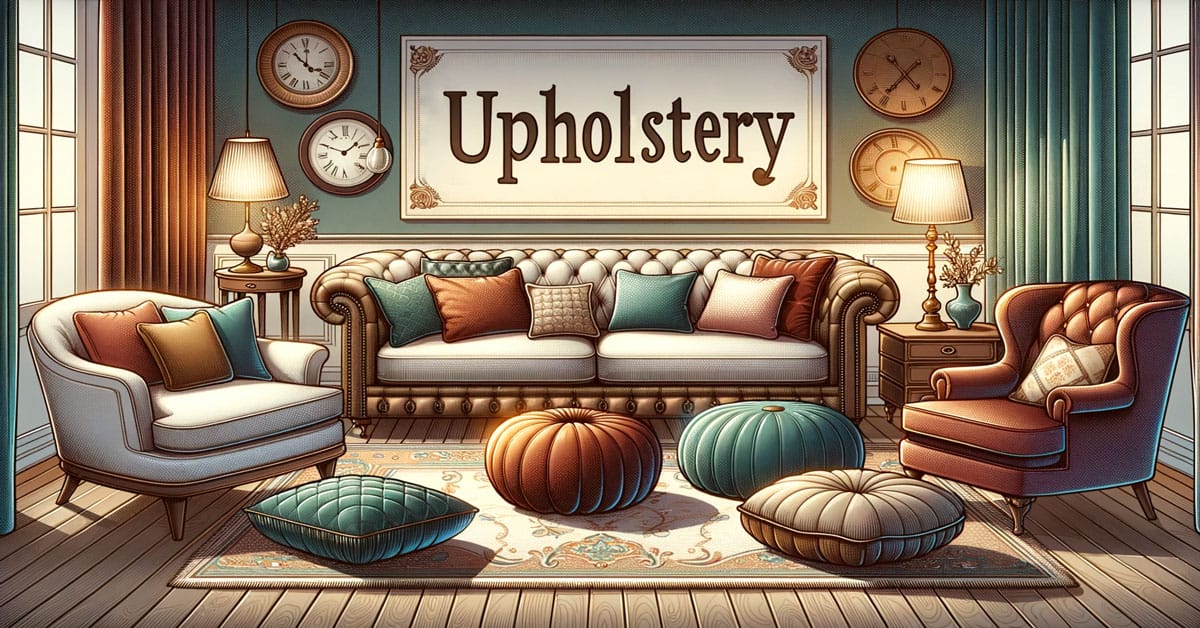
I’ve been there, folks. Standing in the fabric store, overwhelmed by rows of vibrant colors and intricate patterns.
You’re ready to start your next project, but with countless options, how do you choose the perfect textile? Relax. I’m here to break it down for you.
| Factors | Description |
|---|---|
| 🛋️ Type of Project | Identify if it’s a daily use centerpiece or a decorative chair. Align fabric durability and appearance accordingly. |
| 🌦️ Functionality | Choose indoor (like cotton) or outdoor (like synthetic blends). |
| 💪 Durability Needs | Consider if the furniture is high-traffic (needs sturdy materials) or decorative (can use delicate fabrics). |
| ⚖️ Fabric Weight | Heavy fabrics are for structure, and light ones are for cushions or throws. |
| 🌊 Drape | Does the fabric hold its shape (stiff) or flow gracefully (flowy)? |
| 🤸 Stretch | Stretchy for snug fit items, non-stretch for stability. |
| 🚿 Care Instructions | Some fabrics can handle machines, while others need gentle care. |
| 🖐️ Texture | Smooth like silk or textured like chenille? |
| 💲 Budget | High-end or cost-effective alternatives? |
| 🎨 Prints & Patterns | Is it a bold statement piece or a neutral complement? |
| 🌱 Environmental Impact | Eco-friendly options like bamboo or organic cotton are available. |
In this article, we’ll delve into various types of fabrics and their characteristics. We’ll discuss factors like durability, ease of care, cost, and more—everything you need to make an informed decision tailored to your unique project needs!
Why Is It Important To Choose The Right Fabric?
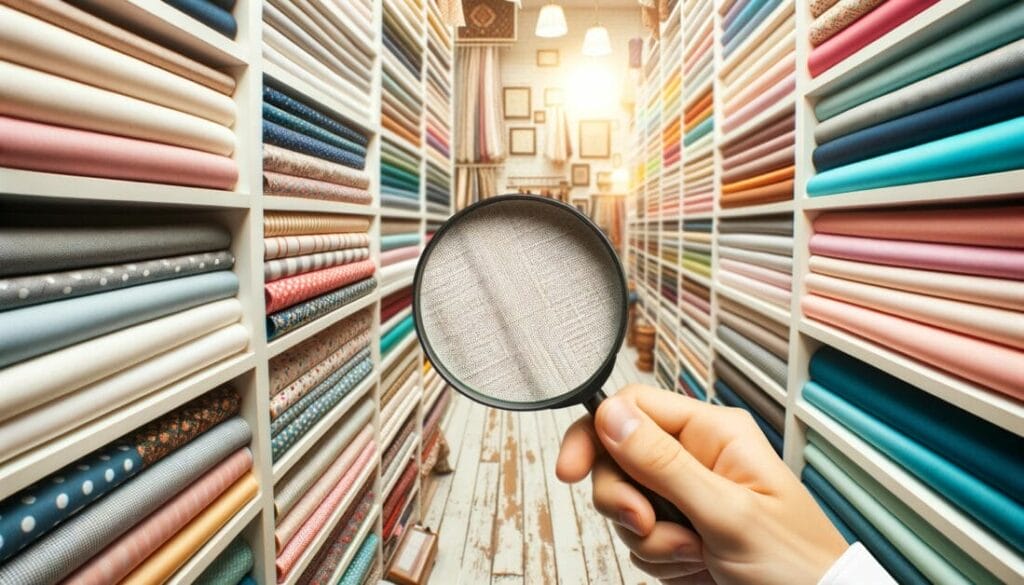
Alright, folks, let’s get one thing straight: picking the right fabric is a game-changer for your project. Nail this choice, and you’re setting yourself up for a piece that doesn’t just look stellar but also stands the test of time.
And trust me, there’s nothing quite like the satisfaction of a job well done with the perfect material backing it up. So, please take a moment, do your homework, and make sure that fabric choice is spot on!
Factors to Consider When Selecting Fabric
Let’s briefly hit the brakes before you dash to the fabric store. You must understand your project’s needs first. Knowing exactly what you need can save you time and money.
Type of Project
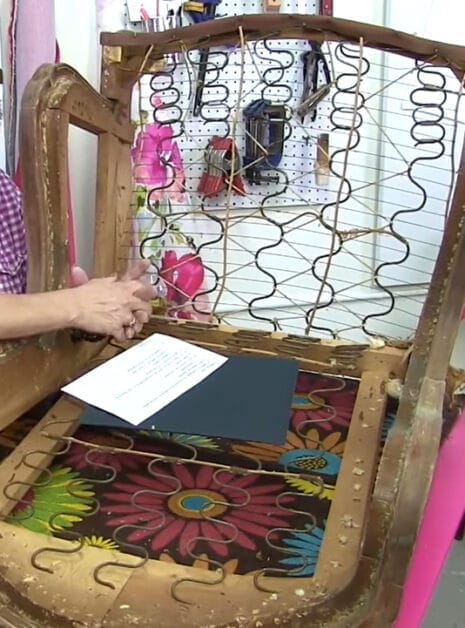
- Begin by identifying the purpose of your furniture. Is it a centerpiece that’ll see daily use or a decorative side chair? Your fabric’s durability and appearance must align with the piece’s function.
Functionality
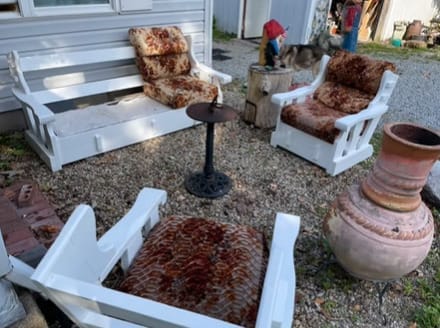
- Outdoor or indoor? This choice greatly determines fabric type. While cotton or silk might be great for the living room couch, outdoor settings would benefit more from weather-resistant materials like synthetic blends.
Durability Needs
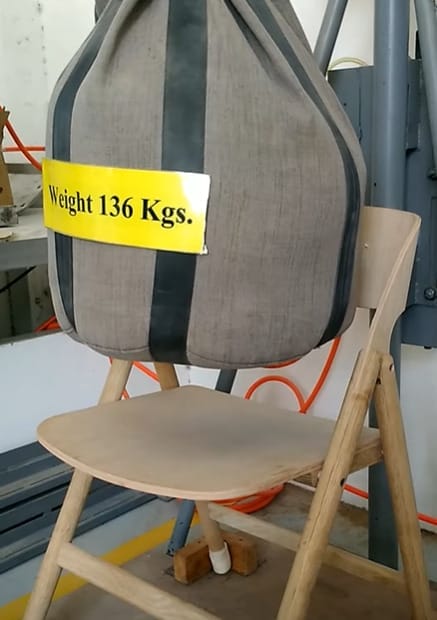
- High-traffic furniture pieces, like the family sofa or dining chairs, demand sturdy materials like leather or durable blends. On the other hand, less frequently used items, such as an occasional chair in the bedroom, can be upholstered in more decorative, delicate fabrics.
Fabric Weight
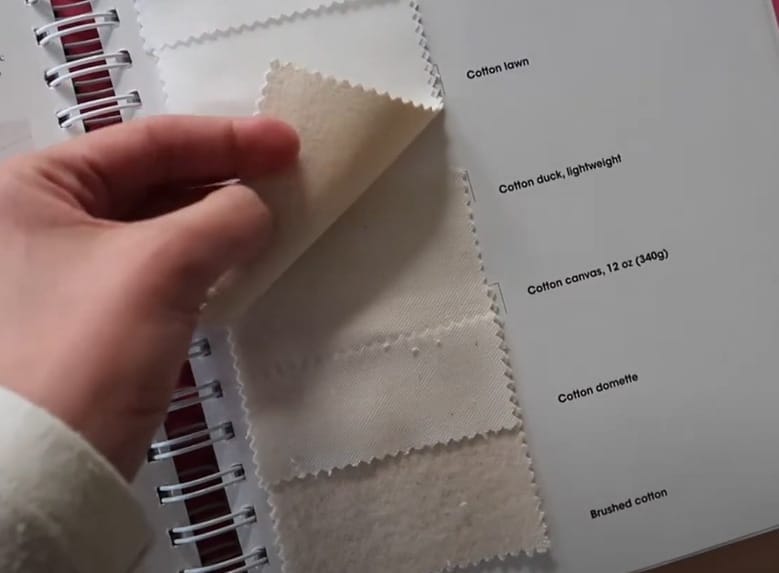
- Fabric weight can influence both function and form. Heavyweight fabrics, like tweed or canvas, give more structure, making them ideal for bigger furniture. Lightweight fabrics like linen or voile might be better suited for cushions or throws.
Drape
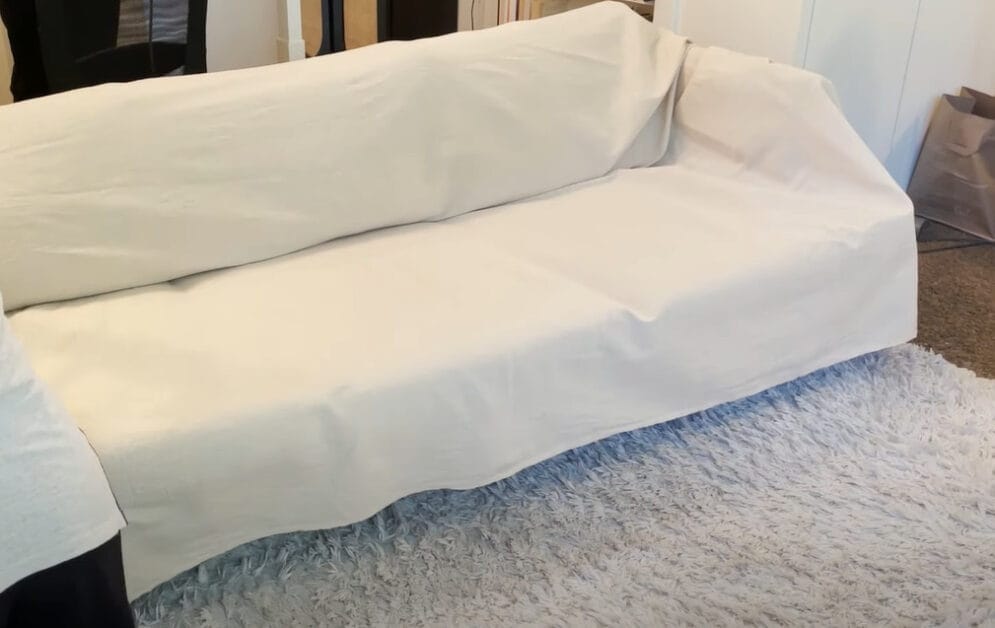
- Drape determines how the fabric will look once it’s laid out. Stiff fabrics offer a tailored look, holding their form. In contrast, flowy fabrics like satin or chiffon will have a graceful, relaxed appearance.
Stretch
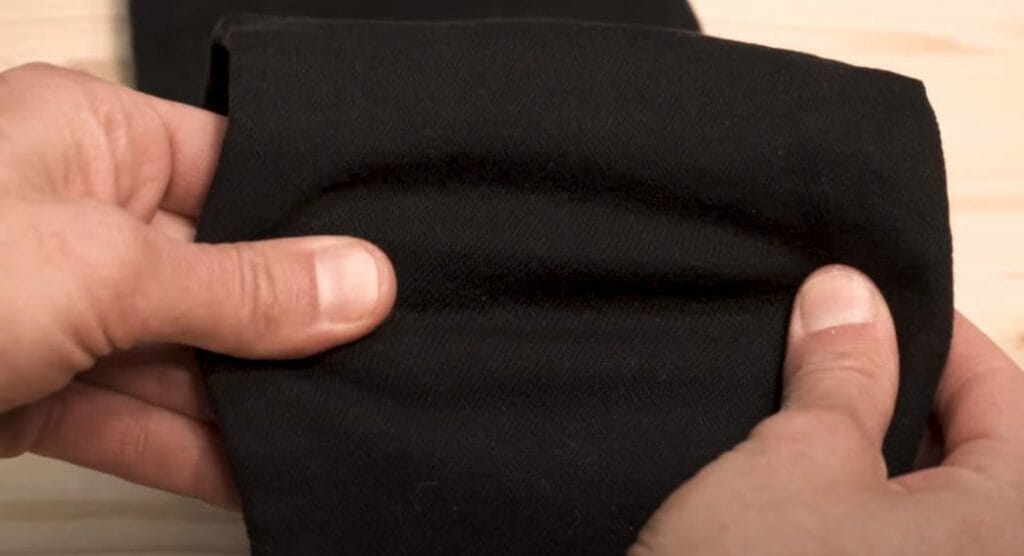
- Stretchy fabrics might be beneficial if you cover items that need a snug fit, like certain chairs. But for items where you want firmness, non-stretch fabrics can offer better stability.
Care Instructions
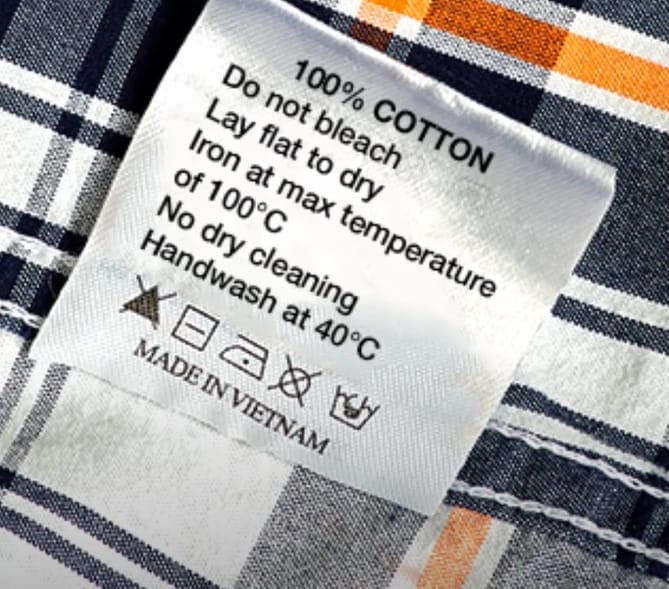
- It’s vital to know how to care for your fabric. Some can handle the rough and tumble of a washing machine, while others might require a gentler hand wash or professional cleaning. Always read the care instructions.
Texture
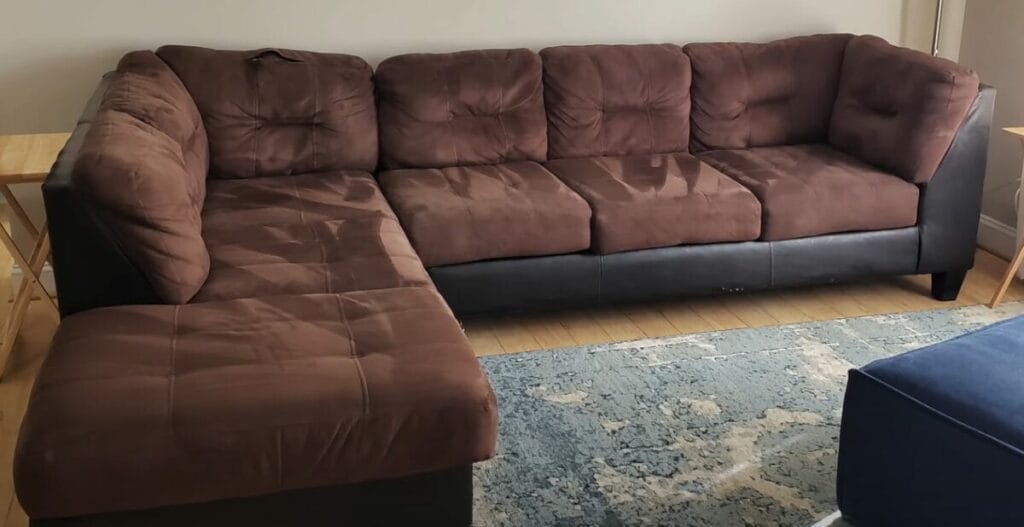
- Always consider how a fabric feels to the touch. While some like the cool smoothness of silk or satin, others might prefer the textured feel of materials like chenille or corduroy.
Budget

- While high-end fabrics like pure silk or genuine leather might be tempting, many quality alternatives offer a similar look and feel without the hefty price tag. Determine your budget range and explore within it.
Prints & Patterns
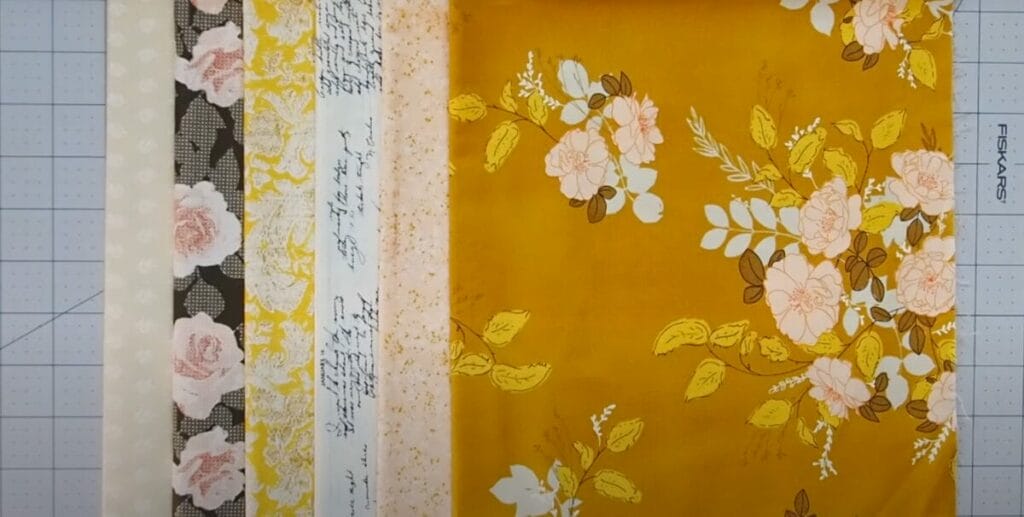
- The fabric’s design can either make it stand out or blend in. Do you want a bold statement piece with vibrant patterns, or are you looking for something neutral that complements existing decor?
Environmental Impact
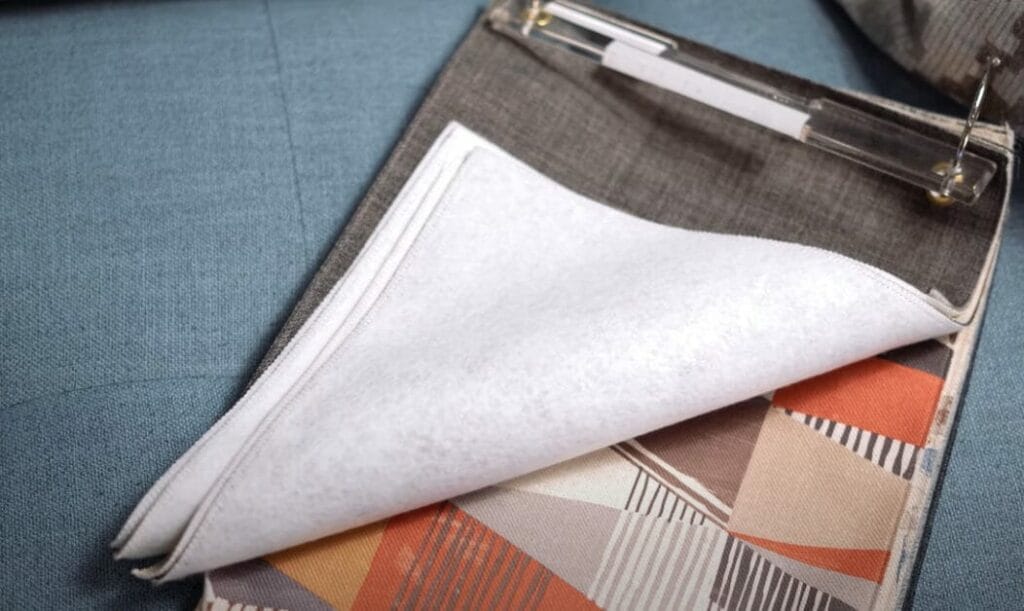
- With growing awareness about sustainability, consider environmentally friendly fabric options. Materials like bamboo, organic cotton, or Tencel have less impact on the planet, allowing you to style responsibly.
Navigating the Fabric Landscape: From Easiest to Trickiest
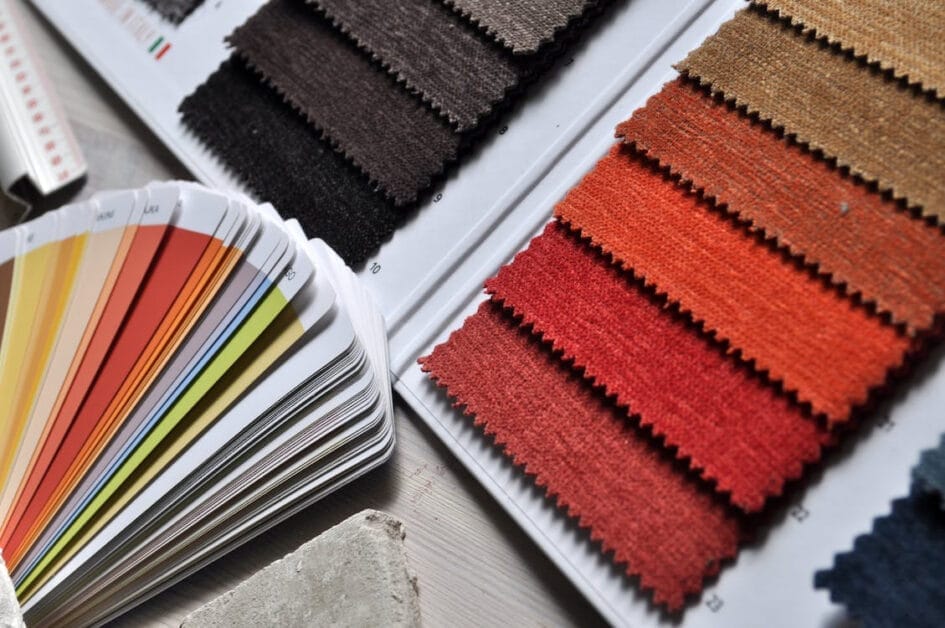
Whether you’re a seasoned crafter or just dipping your toes into the DIY world, some fabrics are renowned for their ease of use and versatility.
This handy table breaks down popular choices, ranking them from the most user-friendly to those requiring more finesse. Let’s dive in!
| Rank | Fabric | Description |
|---|---|---|
| 1 | Fleece | Known for its softness and warmth, fleece is great for cozy upholstery projects like cushions and throws. Plus, it doesn’t fray, so there’s less finishing work involved. |
| 2 | Cotton | Cotton stands tall in upholstery. Breathable and versatile, it’s available in many colors and patterns. It is ideal for sofas, chairs, and even decorative pillows. |
| 3 | Cotton-Polyester Blend | Combining cotton’s comfort with polyester’s durability and wrinkle resistance, this blend is a favorite for everyday furniture. |
| 4 | Linen-Cotton Blend | This blend is softer and less wrinkle-prone than pure linen. Perfect for furniture pieces in high-traffic areas or those that need frequent cleaning. |
| 5 | Polyester | With its durability and wrinkle resistance, polyester is a go-to for furniture that needs to withstand daily wear and tear. However, it’s not as breathable as natural fibers. |
| 6 | Microfiber | Ultra-fine and soft, microfiber upholstery provides a plush feel and is also great for its dust resistance, making it a favorite for allergy sufferers. |
| 7 | Linen | With its natural coolness, Linen is loved for its breezy feel and durability. It’s a top pick for summer-friendly furniture or chic, rustic-themed spaces. |
| 8 | Denim | A sturdy choice, denim brings a casual vibe to upholstery. Its durability makes it suitable for furniture pieces that see frequent use. |
| 9 | Wool | Wool upholstery is warm yet breathable. While it adds a touch of luxury, it does need a bit more care to maintain its elegance. |
| 10 | Nylon | Durable and lightweight, nylon is often chosen for outdoor furniture pieces because of its resistance to wear and tear. |
| 11 | Wool-Synthetic Blend | Combining wool’s warmth with synthetic fibers’ durability, this blend is cost-effective but might require more care when cleaning. |
Remember, the “best” fabric often depends on the specific project and individual preference. While these are tried-and-true favorites, don’t be afraid to experiment and find what works best for you.
After all, crafting is as much about the journey as it is about the finished product!
Common Mistakes to Avoid When Choosing Fabric
Navigating the vast world of fabrics can be both exhilarating and overwhelming. Let’s delve into some common mistakes many make when selecting fabrics and how you can steer clear of them to ensure your project shines.
- Overlooking Fabric Composition: Getting caught up in a pattern or color is easy, but the fabric’s composition is equally crucial. For instance, synthetic fabrics might not breathe as well as natural ones, which can be problematic for certain projects.
- Ignoring Grain Direction: How the fabric is cut can greatly influence the result. Always pay attention to the grain direction, especially when working with materials with a distinct pattern or weave.
- Skipping the Stretch Test: Not all fabrics that appear stretchy offer the same elasticity. Before committing, gently pull the fabric to ensure it aligns with your project’s needs.
- Overlooking Shrinkage: Many fabrics, especially natural fibers, can shrink upon washing. Always account for potential shrinkage by buying a little extra or pre-washing the fabric.
- Neglecting Care Instructions: It might seem like a time-saver to ignore those labels, but improper care can damage the fabric and reduce the lifespan of your project.
- Choosing Style Over Function: While a fabric might look stunning, it’s essential to consider its functionality. A delicate lace might not be the best choice for a frequently used tote bag.
- Not Sampling First: Buying a small sample before purchasing large quantities is wise. This allows you to test the fabric’s feel, stretch, and how it reacts to washing.
Frequently Asked Questions
- What’s the Difference Between Natural and Synthetic Fabrics?
- Natural fabrics come from nature, like cotton (from cotton plants) or wool (from sheep). They tend to be breathable and biodegradable. Synthetic fabrics, on the other hand, are man-made using chemical processes. Examples include polyester and nylon. These offer durability and can be designed for specific purposes, like water resistance.
- How Do I Test Fabric Durability?
- A quick method is the rub test. Gently rub the fabric between your fingers. It might not be the most durable if it feels like it might tear or wear out quickly. Look for fabrics with higher rub test ratings for upholstery projects, often indicated on the label.
- What’s the Best Fabric for Outdoor Projects?
- Look for fabrics labeled as outdoor, UV-resistant, or water-resistant. Materials like outdoor polyester, acrylic, and nylon are designed to withstand the elements, from harsh sun to rain.
- How Do I Choose the Right Fabric for Children’s Clothes?
- You’ll want something durable, comfortable, and easy to clean. Cotton is a favorite because it’s soft and breathable. But blends with a bit of polyester can add durability and wrinkle resistance.
- Why Do Some Fabrics Pill After Washing?
- Pilling happens when short fibers on the surface of the fabric tangle and create little balls. It’s more common in synthetic fabrics or blends. Turn garments inside out before washing to reduce pilling and use a gentle cycle.
- How Can I Identify High-Quality Fabric?
- Look for a tight weave, even color, and a smooth finish. The high-quality fabric also feels sturdy in hand. When in doubt, trust your instincts! If it feels good and looks consistent, it’s likely a solid choice.
- Is There a Way to Soften Stiff Fabric?
- Certainly! Washing the fabric can often soften it. For natural fabrics, adding a bit of white vinegar to the rinse cycle can help. Just remember to check care labels to avoid any mishaps.
- What’s a Fabric “Grain” and Why Does It Matter?
- The grain refers to the direction of the fabric’s weave. Cutting along the grain ensures strength and prevents distortion. It’s especially crucial for projects that require precision, like tailored clothing or quilting.
References
Organizations:
- Textile Society of America. https://textilesocietyofamerica.org/
- American Association of Textile Chemists and Colorists (AATCC). https://www.aatcc.org/
- International Textile and Apparel Association. https://itaaonline.org/
Website Resources:
- FabricLink. http://www.fabriclink.com/
- All About Fabrics. https://allaboutfabrics.com/
Video References:
Kim’s Upholstery
William Hiler
Chana Klanphumsri
Beate Myburgh
Steph Youngren
LTRL Trend | Sewing and Fashion
BRIGHT SIDE
Pattern Scout
The Suitcase Creative
Dufresne Furniture & Appliances

